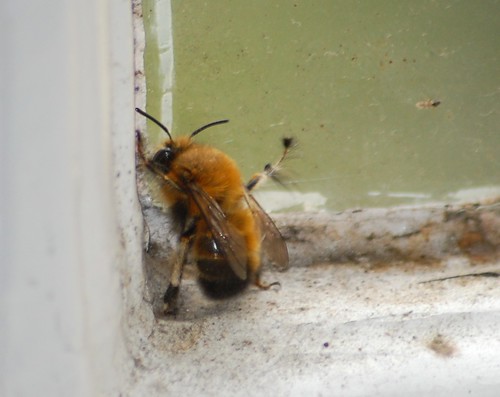The weekend before Easter was a bit of a change - for once, the main targets for sightseeing weren't some of the UK's 40,000 invertebrates, but a few of those minor taxonomical curiosities, the vertebrates.
The back end of the week was the National Forum for Biological Recording's annual conference, held this year in Derby. These conferences always include a day in the field, as befits an organisation whose entire reason for existence is the promotion of biological recording. Seriously, recording your wildlife sightings somewhere like birdtrack or iRecord is one of the best (and easiest!) things you can do to help wildlife - the records are the only window in the world of wildlife for policymakers, planners, etc, and if you don't record your sightings no-one will ever know that species was there.
So on Saturday 5 of us headed northwards from Derby to the Derwent Valley for a day out with the Sorby Natural History Society, guided by local naturalist Derek Whitely. Scrambling up a precipitous hillside, we stumbled almost immediately across a pair of red grouse, then a couple of violet oil beetles, Meloe violaceus. Normally these are huge, with great big fat abdomens, but that's the result of a couple of week's solid eating - these were tiny, freshly emerged individuals with elytra longer than the small, pointed abdomen.
The back end of the week was the National Forum for Biological Recording's annual conference, held this year in Derby. These conferences always include a day in the field, as befits an organisation whose entire reason for existence is the promotion of biological recording. Seriously, recording your wildlife sightings somewhere like birdtrack or iRecord is one of the best (and easiest!) things you can do to help wildlife - the records are the only window in the world of wildlife for policymakers, planners, etc, and if you don't record your sightings no-one will ever know that species was there.
So on Saturday 5 of us headed northwards from Derby to the Derwent Valley for a day out with the Sorby Natural History Society, guided by local naturalist Derek Whitely. Scrambling up a precipitous hillside, we stumbled almost immediately across a pair of red grouse, then a couple of violet oil beetles, Meloe violaceus. Normally these are huge, with great big fat abdomens, but that's the result of a couple of week's solid eating - these were tiny, freshly emerged individuals with elytra longer than the small, pointed abdomen.
 |
| A freshly-emerged oil beetle, photographed by Paula Lightfoot |
Continuing up the path, we were stopped in our tracks by a grey bird quartering low over the moor - a male hen harrier! These beautiful raptors are virtually extinct in England now, with continuing persecution of nesting pairs, so it was fantastic to get good views as it soared lazily by, less than twenty metres away.
Later in the day we began to see tufts of white fur caught up in the heather. In spring, in the Peak District, that can only mean one thing - moulting mountain hares! The theory was quickly proved correct - a strange pale lump moved, revealing itself to be a piebald hare, still mostly white on top, but with plenty of brown fur low down on the sides. These animals - Lepus timidus, the only native British member of the rabbit family - live up in the mountains in Scotland, the Peak District, and the Isle of Man, and they change colour seasonally, white in the winter to hide in the snow, and brown in the summer. One hare quickly became several - half a dozen in the end, all caught mid-change in their seasonal uncertainty.
 |
| Hard at work recording by Derwent Water: curlew above, oil beetles below. Photo: Paula Lightfoot |
On the way back down I was distracted from whistling Golden Plovers and posing Wheatears by a couple of bumblebees - both stranded on the ground wondering what happened to the sun, both new to me - Bombus sylvestris and the beautiful Bombus monticola, my new favourite bee. Clearly I can't spend too long ignoring invertebrates!
 |
| The excellent Bombus monticola. Photo Paula Lightfoot, hand my own |

